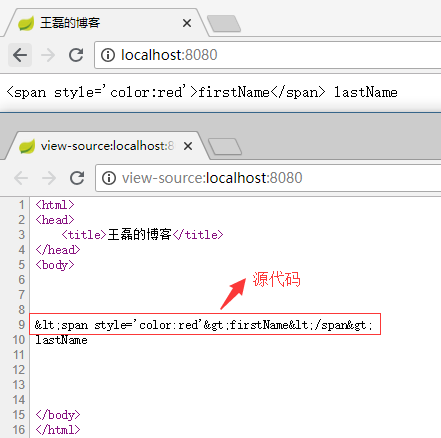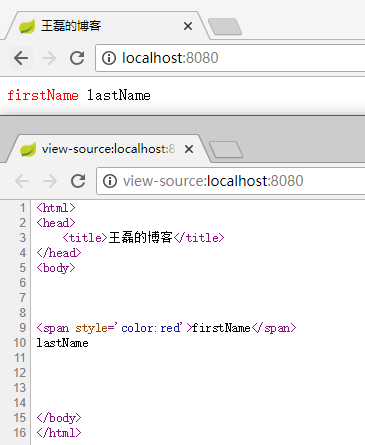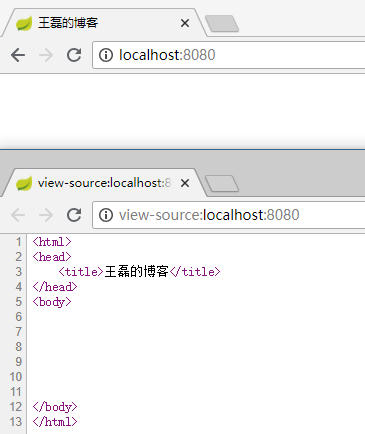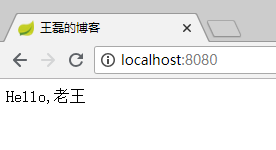一、FreeMaker介绍
FreeMarker是一款免费的Java模板引擎,是一种基于模板和数据生成文本(HMLT、电子邮件、配置文件、源代码等)的工具,它不是面向最终用户的,而是一款程序员使用的组件。
FreeMarker最初设计是用来在MVC模式的Web开发中生成HTML页面的,所以没有绑定Servlet或任意Web相关的东西上,所以它可以运行在非Web应用环境中。
发展史
FreeMarker第一版在1999年未就发布了,2002年初使用JavaCC(Java Compiler Compiler是一个用Java开发的语法分析生成器)重写了FreeMarker的核心代码,2015年FreeMarker代码迁移到了Apache下。
GitHub地址:https://github.com/apache/freemarker
工作原理
FreeMarker模板存储在服务器上,当有用户访问的时候,FreeMarker会查询出相应的数据,替换模板中的标签,生成最终的HTML返回给用户,如下图:

二、FreeMarker基础使用
基础使用分为3部分,这3部分组成了FreeMarker:
- 指令
- 表达式
指令是FreeMarker用来识别转换的特殊标签,表达式是标签里具体的语法实现,其他部分是一些不好分类的模板。
2.1 指令
使用FTL(freemarker template language)标签来调用指令。
指令速览:
- assign
- attempt, recover
- compress
- escape, noescape
- flush
- ftl
- function, return
- global
- if, else, elseif
- import
- include
- list, else, items, sep, break
- local
- macro, nested, return
- noparse
- nt
- setting
- stop
- switch, case, default, break
- t, lt, rt
- visit, recurse, fallback
- 用户自定义标签
下来我们分别来看每个指令对应具体使用。
2.1.1 assign 代码声明
assign 分为变量和代码片段声明两种。
2.1.1.1 变量声明
可以是单变量声明,或多变量声明,下面是多变量声明的示例:
<#assign name="adam" age=18 "sex"="man">
${name} - ${age} - ${"sex"}
单个变量的话,只写一个就可以了。
2.1.1.2 代码片段声明
<#assign code>
<#list ["java","golang"] as c>
${c}
</#list>
</#assign>
${code}
其中 ${code} 是用来执行方法的,如果不调用话,代码片段不会执行。
2.1.2 attempt, recover 异常指令
attempt(尝试), recover(恢复)指令类似于程序的try catch,示例如下:
<#attempt>
i am ${name}
<#recover>
error name
</#attempt>
如果有变量“name”就会正常显示,显示“i am xxx”,如果没有变量就会显示“error name”。
2.1.3 compress 压缩代码移除空白行
<#compress>
1 2 3 4 5
test only
I said, test only
</#compress>
1 2 3 4 5
test only
I said, test only
效果如下:

对空白不敏感的格式,移除空白行还是挺有用的功能。
2.1.4 escape, noescape 转义,不转义
2.1.4.1 escape使用
<#escape x as x?html>
${firstName}
${lastName}
</#escape>
上面的代码,类似于:
${firstName?html}
${lastName?html}
Java代码:
@RequestMapping("/")
public ModelAndView index() {
ModelAndView modelAndView = new ModelAndView("/index");
modelAndView.addObject("firstName", "<span style='color:red'>firstName</span>");
modelAndView.addObject("lastName", "lastName");
return modelAndView;
}
最终的效果是:

2.1.4.2 “?html”语法解析
单问号后面跟的是操作函数,类似于Java中的方法名,html属于内建函数的一个,表示字符串会按照HTML标记输出,字符替换规则如下:
<替换为<>替换为>&替换为&"替换为"
2.1.4.3 noescape使用
HTML代码:
<#escape x as x?html>
<#noescape>
${firstName}
</#noescape>
${lastName}
</#escape>
Java代码:
@RequestMapping("/")
public ModelAndView index() {
ModelAndView modelAndView = new ModelAndView("/index");
modelAndView.addObject("firstName", "<span style='color:red'>firstName</span>");
modelAndView.addObject("lastName", "lastName");
return modelAndView;
}
最终效果:

2.1.5 function, return 方法声明
代码格式:
<#function name param1 param2 ... paramN>
...
<#return returnValue>
...
</#function>
- name 为方法名称
- param1, param2,paramN 方法传递过来的参数,可以有无限个参数,或者没有任何参数
- return 方法返回的值,可以出现在function的任何位置和出现任意次数
示例代码如下:
<#function sum x y z>
<#return x+y+z>
</#function>
${sum(5,5,5)}
注意:function如果没有return是没有意义的,相当于返回null,而function之中信息是不会打印到页面的,示例如下:
<#function wantToPrint>
这里的信息是显示不了的
</#function>
<#if wantToPrint()??>
Message:${wantToPrint()}
</#if>
“??”用于判断值是否是null,如果为null是不执行的。如果不判null直接使用${}打印,会报模板错误,效果如下:

2.1.6 global 全局代码声明
语法如下:
<#global name=value>
或
<#global name1=value1 name2=value2 ... nameN=valueN>
或
<#global name>
capture this
</#global>
global使用和assign用法类似,只不过global声明是全局的,所有的命名空间都是可见的。
2.1.7 if elseif else 条件判断
语法如下:
<#if condition>
...
<#elseif condition2>
...
<#elseif condition3>
...
...
<#else>
...
</#if>
示例如下:
<#assign x=1 >
<#if x==1>
x is 1
<#elseif x==2>
x is 2
<#else>
x is not 1
</#if>
2.1.8 import 引入模板
语法: <#import path as hash>
示例如下
footer.ftl 代码如下:
<html>
<head>
<title>王磊的博客</title>
</head>
<body>
this is footer.ftl
<#assign copy="来自 王磊的博客">
</body>
</html>
index.ftl 代码如下:
<html>
<head>
<title>王磊的博客</title>
</head>
<body>
<#import "footer.ftl" as footer>
${footer.copy}
</body>
</html>
最终输出内容:
来自 王磊的博客
2.1.9 include 嵌入模板
语法: <#include path>
示例如下
footer.ftl 代码如下:
<html>
<head>
<title>王磊的博客</title>
</head>
<body>
this is footer.ftl
<#assign copy="来自 王磊的博客">
</body>
</html>
index.ftl 代码如下:
<html>
<head>
<title>王磊的博客</title>
</head>
<body>
<#include "footer.ftl">
</body>
</html>
最终内容如下:
this is footer.ftl
2.1.10 list, else, items, sep, break 循环
2.1.10.1 正常循环
输出1-3的数字,如果等于2跳出循环,代码如下:
<#list 1..3 as n>
${n}
<#if n==2>
<#break>
</#if>
</#list>
注意:“1..3”等于[1,2,3]。
结果: 1 2
2.1.10.2 使用items输出
示例如下:
<#list 1..3>
<ul>
<#items as n>
<li>${n}</li>
</#items>
</ul>
</#list>
2.1.10.3 sep 使用
跳过最后一项
<#list 1..3 as n>
${n}
<#sep>,</#sep>
</#list>
最终结果:1 , 2 , 3
2.1.10.4 数组最后一项
代码如下:
<#list 1..3 as n>
${n}
<#if !n_has_next>
最后一项
</#if>
</#list>
使用“变量_has_next”判断是否还有下一个选项,来找到最后一项,最终的结果:1 2 3 最后一项
2.1.11 macro 宏
宏:是一个变量名的代码片段,例如:
<#macro sayhi name>
Hello, ${name}
</#macro>
<@sayhi "Adam" />
相当于声明了一个名称为“sayhi”有一个参数“name”的宏,使用自定义标签“@”调用宏。
输出的结果: Hello, Adam
2.1.12 switch, case, defalut, break 多条件判断
示例代码如下:
<#assign animal="dog" >
<#switch animal>
<#case "pig">
This is pig
<#break>
<#case "dog">
This is dog
<#break>
<#default>
This is Aaimal
</#switch>
2.1.13 扩展知识
指令自动忽略空格特性
FreeMarker会忽略FTL标签中的空白标记,所以可以直接写:
<#list ["老王","老李","老张"]
as
p>
${p}
</#list>
即使是这个格式也是没有任何问题的,FreeMarker会正常解析。
2.2 表达式
2.2.1 字符串拼接
字符拼接代码:
<#assign name="ABCDEFG">
${"Hello, ${name}"}
结果:Hello, ABCDEFG
2.2.2 算术运算
2.2.2.1 算术符
算术符有五种:
+-*/%求余(求模)
示例代码:
${100 - 10 * 20}
输出:
-100
2.2.2.2 数值转换
${1.999?int}
输出:
1
注意:数值转换不会进行四舍五入,会舍弃小数点之后的。
2.2.3 内建函数(重点)
内建函数:相当于我们Java类里面的内置方法,非常常用,常用的内建函数有:时间内建函数、字符内建函数、数字内建函数等。
2.2.3.1 单个问号和两个问号的使用和区别
单问号:在FreeMarker中用单个问号,来调用内建函数,比如: ${"admin"?length} 查看字符串“admin”的字符长度,其中length就是字符串的内建函数。
双引号:表示用于判断值是否为null,比如:
<#if admin??>
Admin is not null
</#if>
2.2.3.2 字符串内建函数
2.2.3.2.1 是否包含判断
使用contains判断,代码示例:
<#if "admin"?contains("min")>
min
<#else >
not min
</#if>
输出:
min
2.2.3.2.2 大小写转换
示例代码:
<#assign name="Adam">
${name?uncap_first}
${name?upper_case}
${name?cap_first}
${name?lower_case}
输出:
adam ADAM Adam adam
更多的字符串内建函数:https://freemarker.apache.org/docs/ref_builtins_string.html
2.2.3.3 数字内建函数
示例代码:
${1.23569?string.percent}
${1.23569?string["0.##"]}
${1.23569?string["0.###"]}
输出:
124% 1.24 1.236
注意:
- 使用string.percent计算百分比,会自动四舍五入。
- 使用“?string["0.##"]”可以自定义取小数点后几位,会自动四舍五入。
2.2.3.4 时间内建函数
2.2.3.4.1 时间戳转换为任何时间格式
代码:
<#assign timestamp=1534414202000>
${timestamp?number_to_datetime?string["yyyy/MM/dd HH:mm"]}
输出:
2018/08/16 18:10
2.2.3.4.2 时间格式化
示例代码:
<#assign nowTime = .now>
${nowTime} <br />
${nowTime?string["yyyy/MM/dd HH:mm"]} <br />
输出:
2018-8-16 18:33:50
2018/08/16 18:33
更多内建方法:https://freemarker.apache.org/docs/ref_builtins.html
三、Spring Boot 集成
3.1 集成环境
- Spring Boot 2.0.4
- FreeMaker 2.3.28
- JDK 8
- Windows 10
- IDEA 2018.2.1
3.2 集成步骤
3.2.1 pom.xml 添加FreeMaker依赖
<dependency>
<groupId>org.springframework.boot</groupId>
<artifactId>spring-boot-starter-freemarker</artifactId>
</dependency>
3.2.2 application.properties 配置模板
主要配置,如下:
## Freemarker 配置
spring.freemarker.template-loader-path=classpath:/templates/
spring.freemarker.cache=false
spring.freemarker.charset=UTF-8
spring.freemarker.check-template-location=true
spring.freemarker.content-type=text/html
spring.freemarker.expose-request-attributes=false
spring.freemarker.expose-session-attributes=false
spring.freemarker.request-context-attribute=request
spring.freemarker.suffix=.ftl
| 配置项 | 类型 | 默认值 | 建议值 | 说明 |
|---|---|---|---|---|
| spring.freemarker.template-loader-path | String | classpath:/templates/ | 默认 | 模版存放路径 |
| spring.freemarker.cache | bool | true | 默认 | 是否开启缓存,生成环境建议开启 |
| spring.freemarker.charset | String | - | UTF-8 | 编码 |
| spring.freemarker.content-type | String | text/html | text/html | content-type类型 |
| spring.freemarker.suffix | String | .ftl | .ftl | 模板后缀 |
| spring.freemarker.expose-request-attributes | bool | false | false | 设定所有request的属性在merge到模板的时候,是否要都添加到model中 |
| spring.freemarker.expose-session-attributes | bool | false | false | 设定所有HttpSession的属性在merge到模板的时候,是否要都添加到model中. |
| spring.freemarker.request-context-attribute | String | - | request | RequestContext属性的名称 |
更多配置:
# FREEMARKER (FreeMarkerProperties)
spring.freemarker.allow-request-override=false # Whether HttpServletRequest attributes are allowed to override (hide) controller generated model attributes of the same name.
spring.freemarker.allow-session-override=false # Whether HttpSession attributes are allowed to override (hide) controller generated model attributes of the same name.
spring.freemarker.cache=false # Whether to enable template caching.
spring.freemarker.charset=UTF-8 # Template encoding.
spring.freemarker.check-template-location=true # Whether to check that the templates location exists.
spring.freemarker.content-type=text/html # Content-Type value.
spring.freemarker.enabled=true # Whether to enable MVC view resolution for this technology.
spring.freemarker.expose-request-attributes=false # Whether all request attributes should be added to the model prior to merging with the template.
spring.freemarker.expose-session-attributes=false # Whether all HttpSession attributes should be added to the model prior to merging with the template.
spring.freemarker.expose-spring-macro-helpers=true # Whether to expose a RequestContext for use by Spring's macro library, under the name "springMacroRequestContext".
spring.freemarker.prefer-file-system-access=true # Whether to prefer file system access for template loading. File system access enables hot detection of template changes.
spring.freemarker.prefix= # Prefix that gets prepended to view names when building a URL.
spring.freemarker.request-context-attribute= # Name of the RequestContext attribute for all views.
spring.freemarker.settings.*= # Well-known FreeMarker keys which are passed to FreeMarker's Configuration.
spring.freemarker.suffix=.ftl # Suffix that gets appended to view names when building a URL.
spring.freemarker.template-loader-path=classpath:/templates/ # Comma-separated list of template paths.
spring.freemarker.view-names= # White list of view names that can be resolved.
3.2.3 编写HTML代码
<html>
<head>
<title>王磊的博客</title>
</head>
<body>
<div>
Hello,${name}
</div>
</body>
</html>
3.2.4 编写Java代码
新建index.java文件,Application.java(入口文件)代码不便,index.java代码如下:
import org.springframework.stereotype.Controller;
import org.springframework.web.bind.annotation.RequestMapping;
import org.springframework.web.servlet.ModelAndView;
@Controller
@RequestMapping("/")
public class Index {
@RequestMapping("/")
public ModelAndView index() {
ModelAndView modelAndView = new ModelAndView("/index");
modelAndView.addObject("name", "老王");
return modelAndView;
}
}
关键代码解读:
- @Controller注解:标识自己为控制器,只需要配置@RequestMapping之后,就可以把用户URL映射到控制器;
- 使用ModelAndView对象,指定视图名&添加视图对象。
3.2.5 运行
执行上面4个步骤之后,就可以运行这个Java项目了,如果是IDEA使用默认快捷键“Shift + F10”启动调试,在页面访问:http://localhost:8080/ 就可看到如下效果:

四、参考资料
FreeMarker官方文档:https://freemarker.apache.org/
FreeMarker翻译的中文网站:http://freemarker.foofun.cn/toc.html